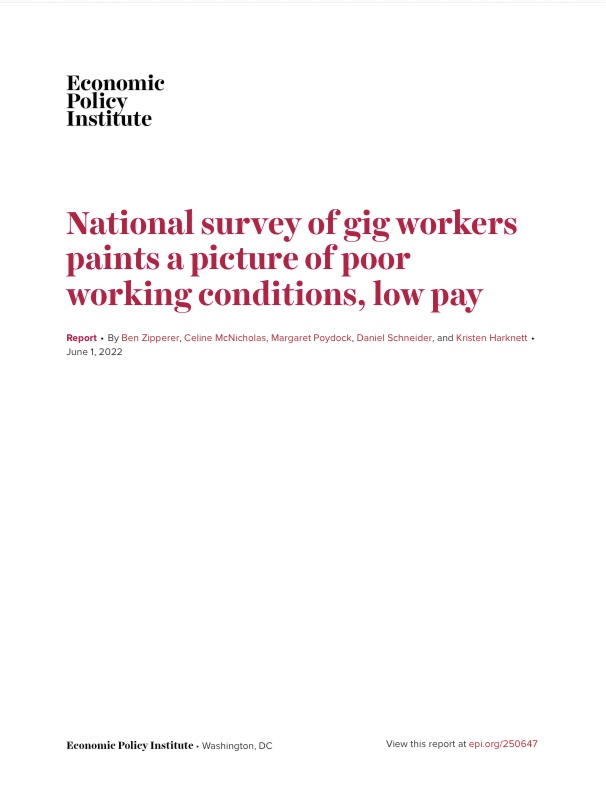National survey of gig workers paints a picture of poor working conditions, low pay
By Ben Zipperer, Celine McNicholas, Margaret Poydock, Daniel Schneider & Kristen Harknett While the concept of nontraditional, short-term, and contract work has been around since well before the digital age, it wasn’t until the 2010s that digital platform companies like Uber, DoorDash, Instacart, and TaskRabbit began to rise to prominence and shape the way we define gig work today. In the most basic terms, gig work can be defined as work done by individuals who are classified as self-employed, freelancers,...

